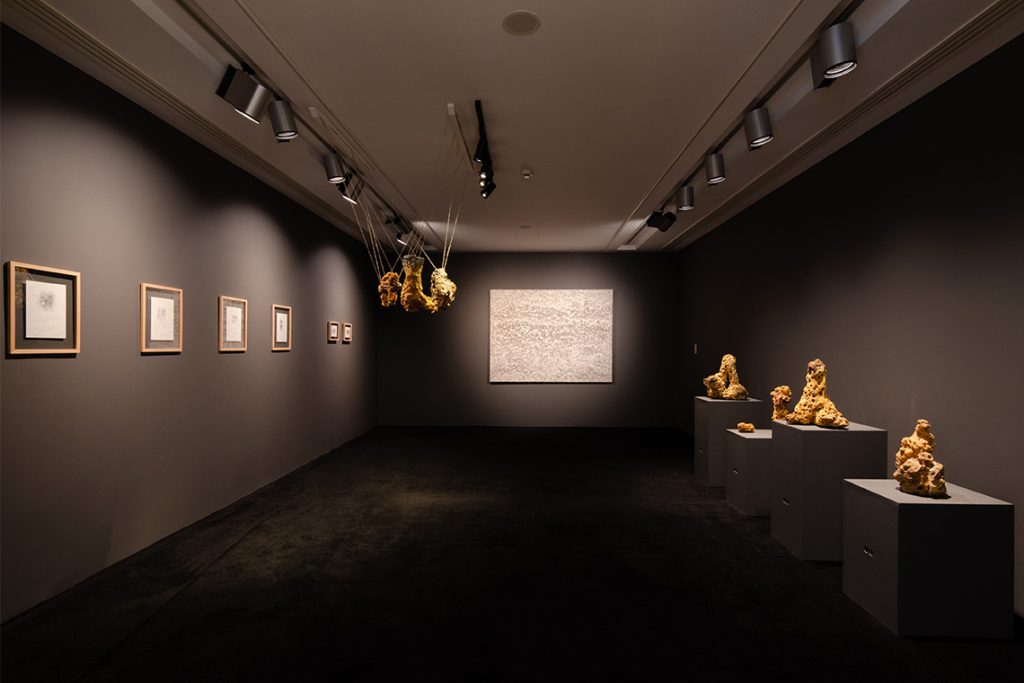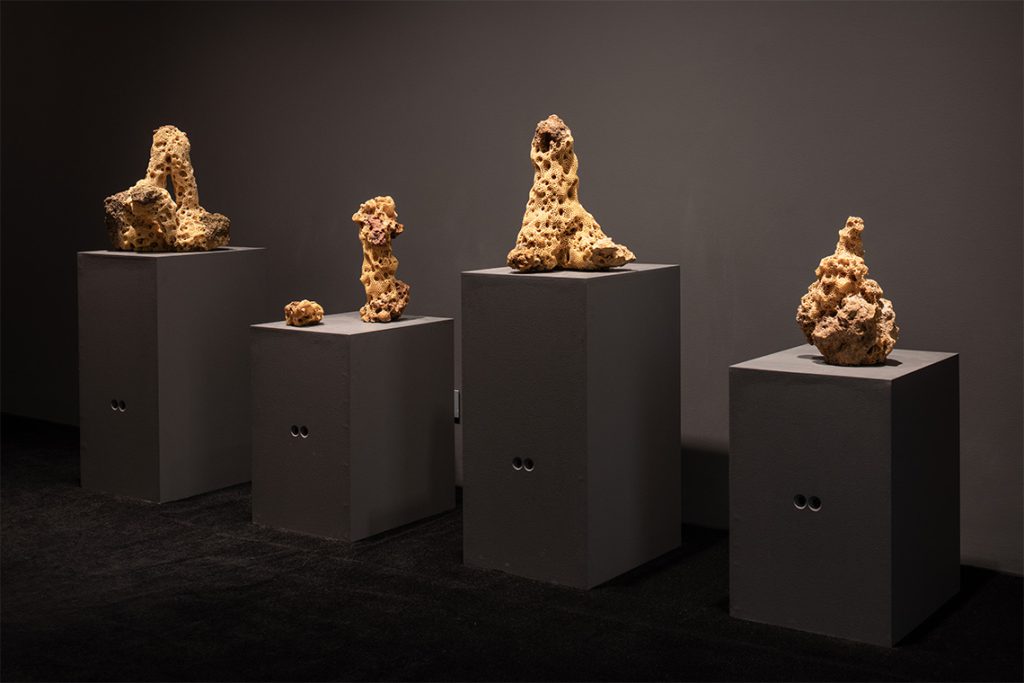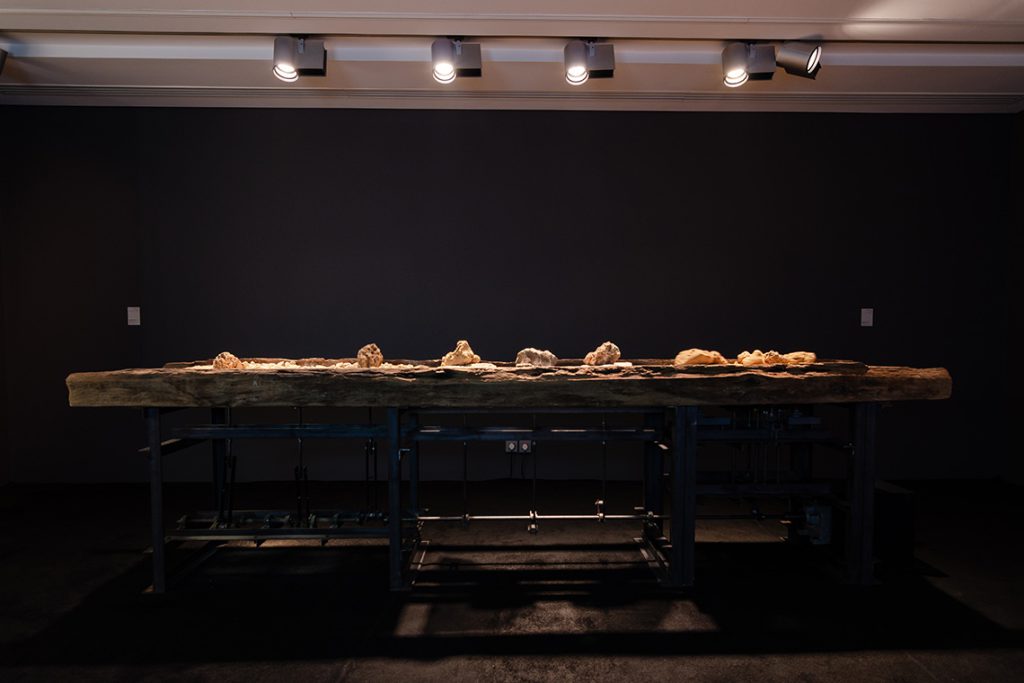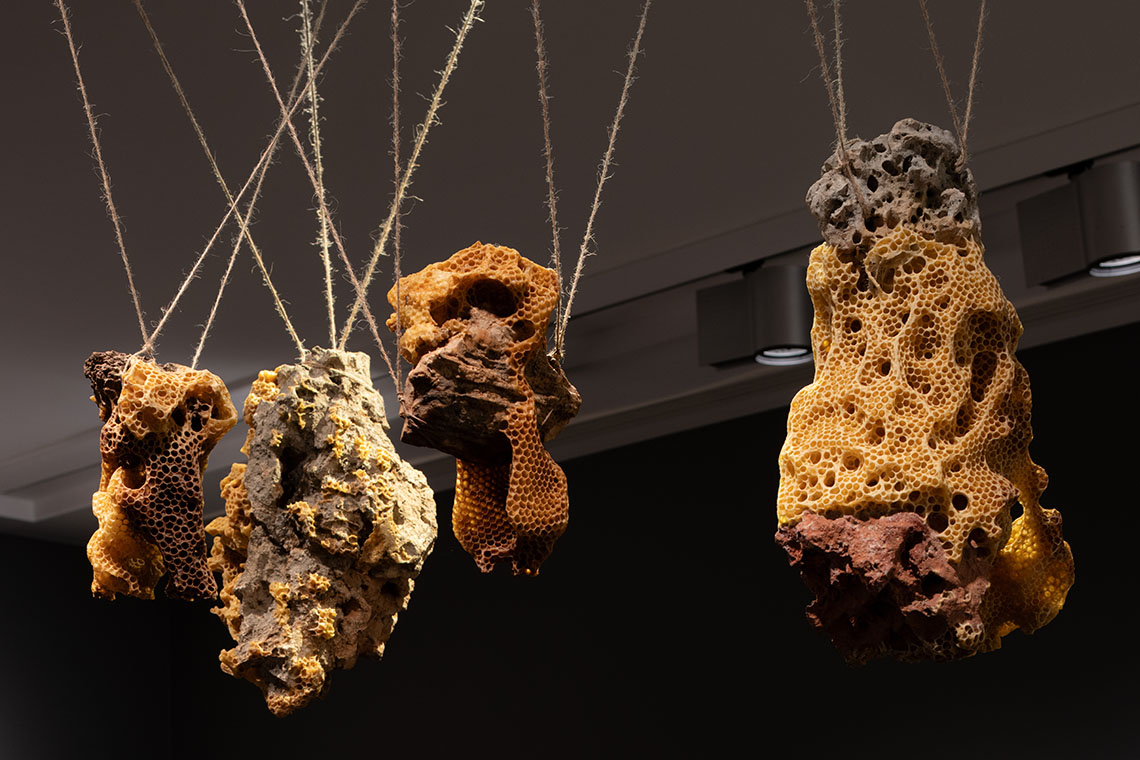Charbel Samuel Aoun’s current exhibition, Sympoietic Fabrics, at Sursock Museum, interweaves art with ecology to capture the pulse between nature’s rhythms and human interaction.
Known for his in-situ installations that explore the subtlety of senses by weaving together sound, texture and natural materials, Beirut-based artist Charbel Samuel Aoun presents his first institutional solo exhibition Sympoietic Fabrics at Sursock Museum.
Aoun’s practice interlaces the natural world with technology and mechanics, using them to accelerate or alter natural processes in order to capture their micro-movements in ways that people can experience themselves. Trained as an architect, the artist’s utilises spatial experiences and multi-sensory triggers to encourage the audience to engage and communicate with their ecological surroundings.
Curated by Marie-Nour Héchaimé and presented in the Sursock’s Twin Galleries, the show combines earth, stones, wood and wax in the form of sculptures, paintings and a motorised installation, as well as video-documented special experiments from the past four years.

“For a long time I’ve been seeking the resonance of minerals, specifically stones,” Aoun shares with Canvas. “I’ve been working in situ, free from the exhibition space and more into the social space. When I came and saw the space that was proposed for me at Sursock, I felt like these are little caves into which I can go and show my work, like I would for my documented pieces.”
Aoun is especially interested in how different elements might impact upon the particular focus or subject of his attention. “It’s a continuous search for the form that is sensitive to contextual or external energies – wind, gravity, sun, those all created by exposure to an outside stimulus,” he adds. “How a tree, for example, might bend and grow depending on the wind, the amount of water in the soil or the weight of its fruit.”
The Twin Galleries are two small opposing rooms connected by an atrium. In each gallery is an installation showing the intricate weaving between matter and the continuum of movement, as well as a large painting made by layering lime, earth, ash and natural pigments.
In the right gallery, Aoun presents four video pieces documenting installations and performances created in Lebanon and France. Archaeology of Touch (2022), an Installation performed at the Phoenician wellspring Ain El-Malak in Byblos, reactivates the ancient site for a spiritual and sensory experience, creating a modern ritual that commemorates those that would have taken place there in antiquity.

“The Phoenicians constructed their whole architecture around the well,” Aoun says. “It has an inverted architecture. Instead of [building upwards, they built down, like an amphitheatre.]” Historically it was the space where many ceremonies and rituals used to happen, such as the myth of Isis and Osiris, which relates how Isis would come to the well and cry for Osiris, who was buried in the royal palace.
“I wanted to create a ceremony by keeping the intervention to minimum and without dictating for people what to do, so within the passage around the well I placed four shallow containers on the ground,” he adds. “Like a series of paths to the well. The first one was grass and then stone, next was mud and lastly water. Inside those paths were microphones, so when people touched or walked through, the sound was played into the well and echoed back.”
Similar themes are explored in A Breath into a Hole (2020), a performance in three acts staged in Beirut just a few months after the port explosion of 4 August 4 2020. At sites surrounding the port, Aoun transformed a pile of rubble into a healing garden of aloe arborescence and digs down into the earth to uncover the layers of history visible in the strata of the soil, attempting to connect with his heritage after the calamity.
The main installation of this room, Stoneology (2024), takes piles of rocks and activates them through mechanisms, as microphones amplify the quiet sound of the rocks clinking against each other. They rise and fall like a breathing rock bed, or rotate on motors in a rhythm.

In the left gallery are sculptures made of rocks and wax from a collaboration with the artist’s own bees, which he started keeping in 2020. Titled Micropolis (2024), the sculptures are presented on pedestals or hung from above, and are the result of experimenting with how the bees build their hives when stones are introduced into their environment.
“Once I was cleaning the frames and putting this mix of propolis and wax inside, and the bees came and sculpted it all,” Aoun explains. “Normally, you can see how they produce the wax, but if you give them something like this mass of propolis [a resin-like material made from poplar and cone-bearing trees] they sculpt very differently. It was like a stone and I was intrigued by this.”
He then started placing and hanging stones in the hives so the bees would come and work on them. “First I started delicately, with just one stone, and then I began to create structures, placing four stones and making pyramids. I was creating architecture, but the bees were the ones responsible for sculpting their city, creating all the tunnels. I was visiting each week and watching, sometimes intervening a bit.”
The sculptures are intended as examples of how nature can craft its own tapestries and structures, but also a note on how working together – either through collaboration or as a collective society like the bees – is better than doing everything alone.



